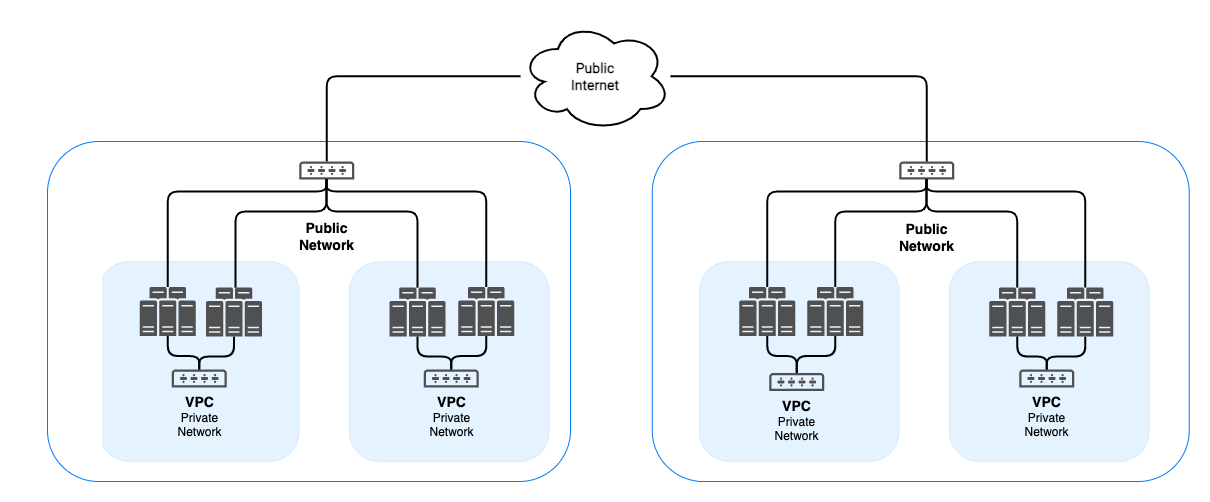Connecting Raspberry Pi and IoT Devices via RemoteIoT VPC: A Comprehensive Guide
Understanding IoT P2P and IoT VPC
In the vast landscape of contemporary technological advancements, the Internet of Things (IoT) has ascended as a formidable force, enabling seamless communication among an eclectic array of devices. The paradigms of IoT P2P (Peer-to-Peer) and IoT VPC (Virtual Private Cloud) have garnered substantial traction, offering robust methodologies for secure device interaction. People are increasingly harnessing these technologies to amplify connectivity and fortify data security within their IoT ecosystems.

IoT P2P facilitates direct device connections, obviating the necessity for an intermediary server. This direct engagement curtails latency and augments communication velocity. Conversely, IoT VPC engenders a fortified virtual network, exclusively dedicated to IoT devices, thereby ensuring data transmission remains impervious to external threats.
The Role of Raspberry Pi in IoT
The Raspberry Pi has unequivocally transformed the approach to IoT projects, presenting an economical and versatile platform for cultivating inventive applications. Its compact form factor, combined with potent computational capabilities, renders Raspberry Pi an ideal candidate for IoT deployments. People can explore and implement a myriad of IoT solutions with relative ease.
Particularly, Raspberry Pi P2P and Raspberry Pi VPC have emerged as predominant choices among aficionados and professionals alike. These methodologies facilitate efficient inter-device communication, ensuring that data is transmitted securely and reliably. By exploiting these technologies, people can architect resilient IoT networks tailored to their bespoke requirements.
Setting Up Raspberry Pi P2P
Establishing a Raspberry Pi P2P connection necessitates a meticulous sequence of steps to ensure a seamless and secure linkage. Initially, people must configure their Raspberry Pi devices with requisite software and libraries, entailing the installation of an appropriate operating system and activation of P2P functionality.
Subsequent to configuration, the devices must be networked cohesively to facilitate direct communication. Utilizing tools such as RemoteIoT, people can establish a secure P2P connection between their Raspberry Pi devices, enabling data exchange sans an intermediary server. This configuration optimizes data transmission efficiency and is particularly suited for real-time applications.
Implementing Raspberry Pi VPC
The implementation of Raspberry Pi VPC encompasses the creation of a virtual private network interconnecting multiple Raspberry Pi devices within a secure environment. This arrangement ensures that data transmission is shielded from external threats, providing a reliable and secure conduit for IoT applications.
People can utilize RemoteIoT to configure a VPC for their Raspberry Pi devices. This process involves orchestrating the devices to connect to the RemoteIoT VPC, thereby guaranteeing that all transmitted data is encrypted and secure. By harnessing the capabilities of Raspberry Pi VPC, people can construct a robust and secure IoT network meticulously tailored to their specific needs.
Benefits of Using RemoteIoT for IoT Projects
RemoteIoT proffers a comprehensive platform for managing and securing IoT devices, brimming with features that enhance the efficacy and security of IoT projects. By employing RemoteIoT, people can effortlessly configure and administer their IoT networks, ensuring cohesive connectivity and communication among devices.
A salient benefit of RemoteIoT lies in its support for both P2P and VPC connections, permitting people to select the optimal method for their particular needs. Additionally, RemoteIoT is endowed with robust security features, safeguarding all data transmitted within the network from external threats. This renders it an exemplary choice for IoT projects necessitating secure and reliable communication channels.
Practical Applications of IoT P2P and VPC
The utilitarian applications of IoT P2P and VPC are expansive and multifaceted, addressing a plethora of industries and use cases. In the healthcare sector, for instance, IoT P2P can be employed to interconnect medical devices, enabling real-time monitoring and data interchange. This augments the efficiency of healthcare services, ensuring patients receive timely and accurate information.
In the industrial domain, IoT VPC can be deployed to fabricate secure networks for machinery monitoring and control. This ensures that data transmitted between devices remains safeguarded, mitigating the risk of cyber threats and bolstering the overall security of industrial operations. People can leverage the capabilities of IoT P2P and VPC to devise innovative solutions tailored to their specific needs, augmenting the efficiency and security of their operations.
Conclusion
In summation, the integration of IoT P2P and IoT VPC with Raspberry Pi devices proffers a potent and versatile solution for contemporary IoT projects. By leveraging the capabilities of RemoteIoT, people can construct secure and efficient IoT networks, meticulously tailored to their specific needs. Whether for healthcare, industrial, or other applications, the amalgamation of IoT P2P and VPC with Raspberry Pi furnishes a reliable and secure communication channel, enhancing the overall performance and security of IoT deployments.
